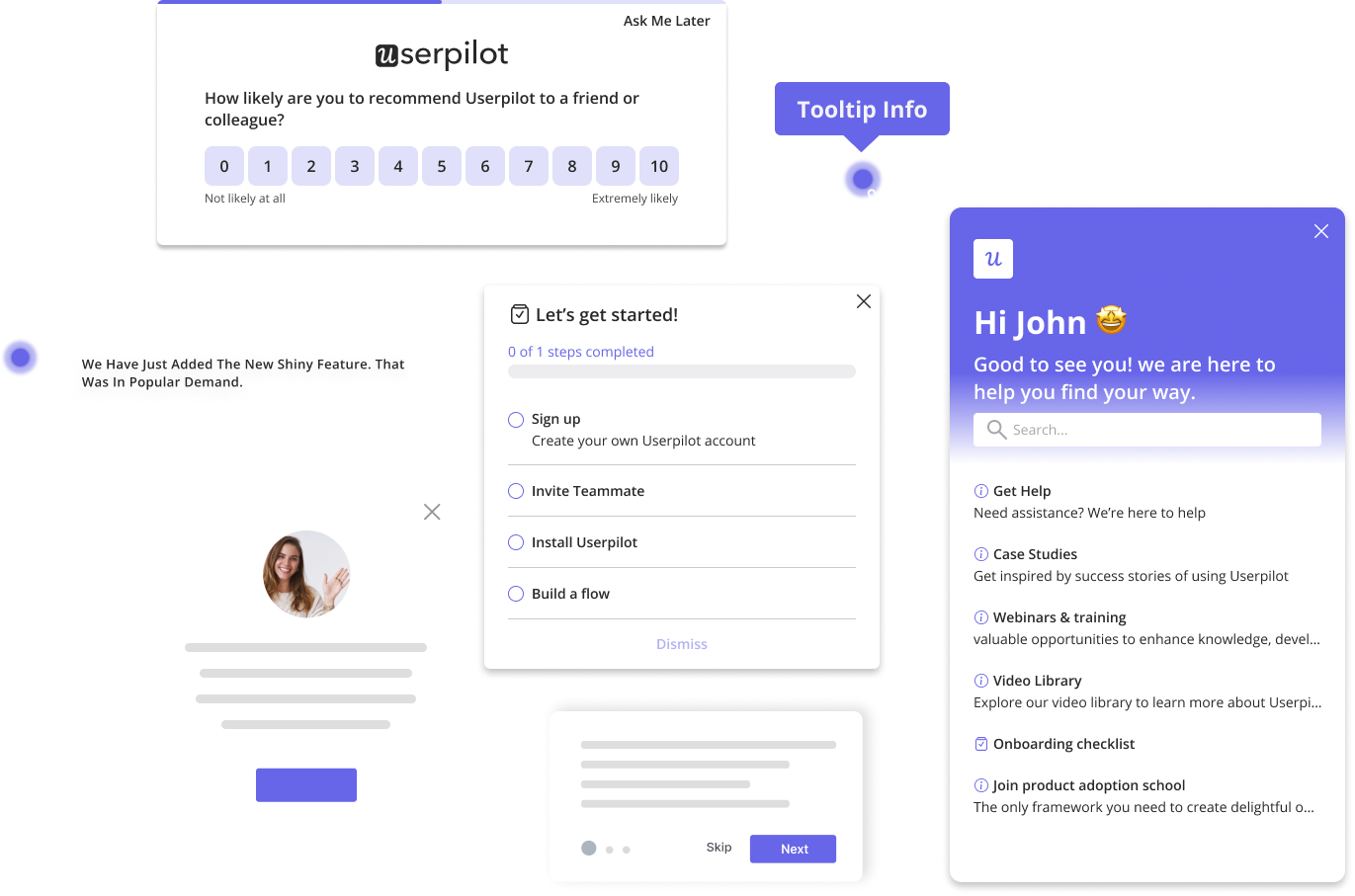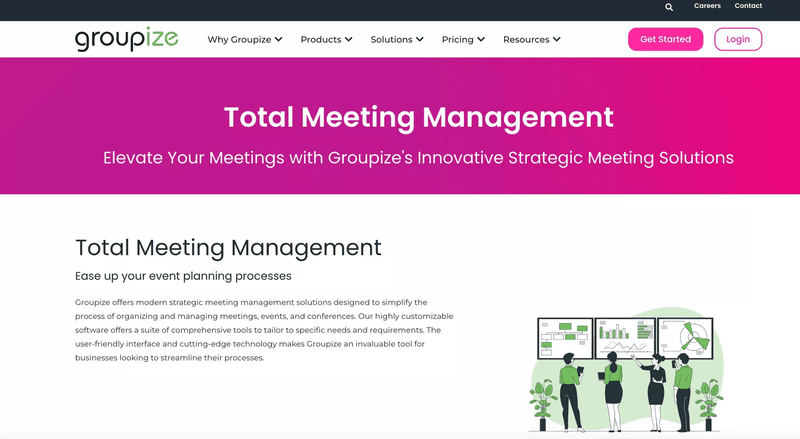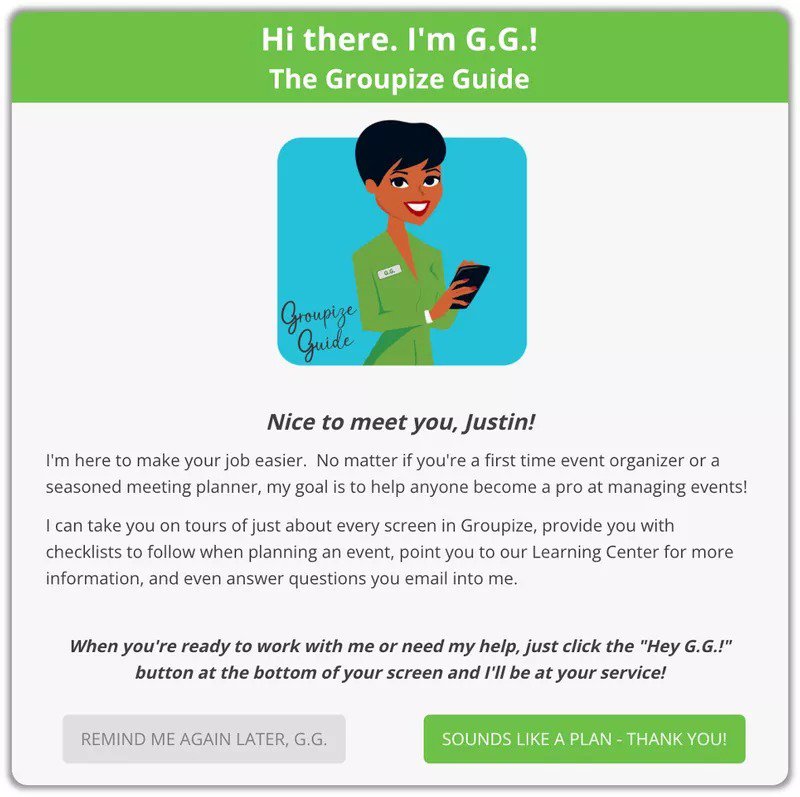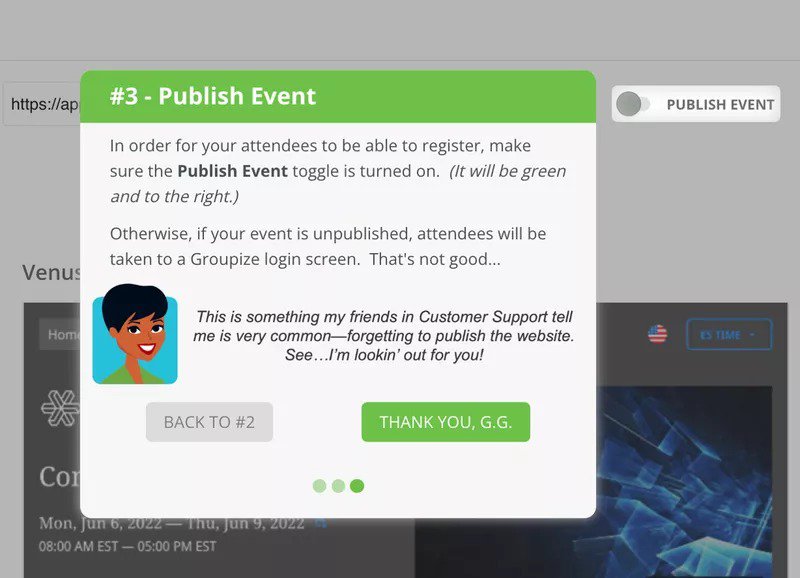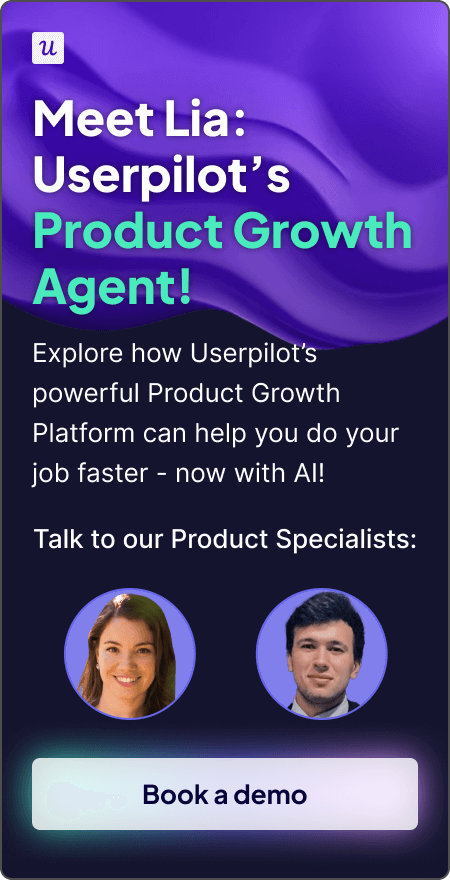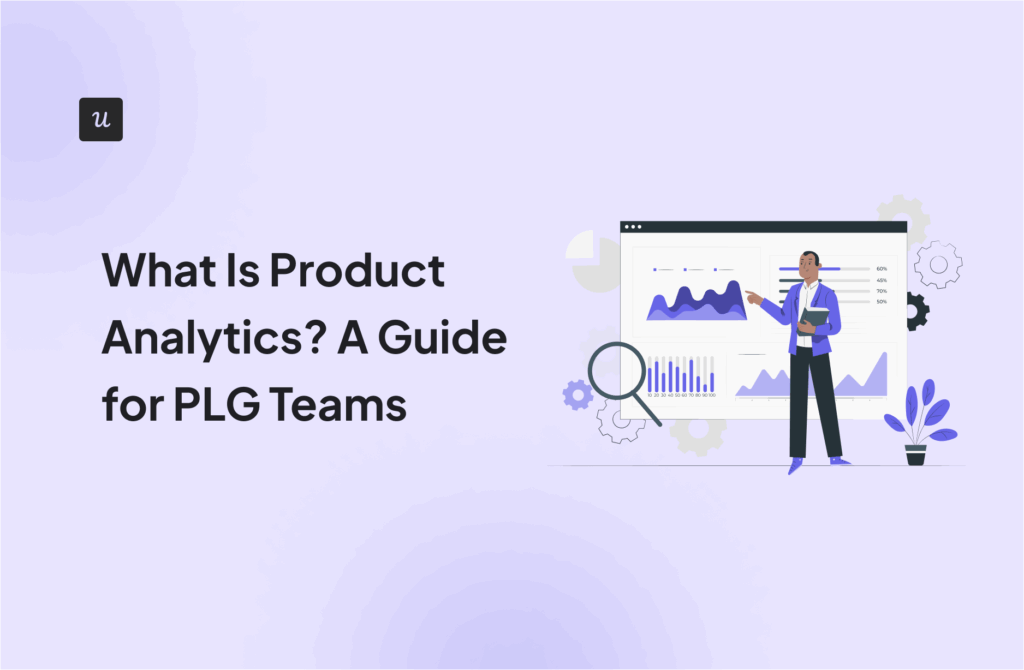![The Complete Guide to Product-Led Growth Marketing: Benefits and Strategies [+ Examples] cover](https://blog-static.userpilot.com/blog/wp-content/uploads/2023/11/the-complete-guide-to-product-led-growth-marketing-benefits-and-strategies-examples_69e7b2976e802cc5e8e11a83fd2277a1_2000.png)
The Complete Guide to Product-Led Growth Marketing: Benefits and Strategies [+ Examples]
Zoom’s revenue shot up from around $620M to over $2.5B between 2020 and 2021 (300+% YoY growth), and Notion’s reported ARR grew over 10X within the same period. Was this just opportunity meeting preparation, or a sign to pay more attention to product-led growth marketing?
Yes, the 2020 pandemic played a major role: People were forced to stay at home, and teams needed a way to keep in touch. But not every digital company enjoyed these super levels of adoption. PLG companies like Zoom and Notion felt like the perfect solutions because they didn’t require everyday users to go through lengthy sales-led processes before experiencing how a product works.
The pandemic may be over, but consumer behavior hasn’t changed much. Gainsight reports that more businesses are investing in the PLG model, with 47% of the surveyed group admitting to doubling PLG efforts.
So, what exactly is a product-led strategy, and how can it help you attract, convert, and retain users?
What’s your biggest challenge with your current growth model?
How do you approach new user onboarding right now?
How do you drive adoption for new or underused features?
What’s your main goal with a product-led growth marketing strategy?
Ready to accelerate your product-led growth?
Userpilot empowers you to build the engaging, self-serve product experiences that drive acquisition, retention, and expansion. See how you can implement a winning product-led growth marketing strategy.
Try Userpilot Now
See Why 1,000+ Teams Choose Userpilot
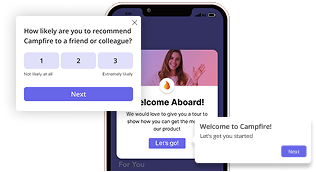
What is product-led growth marketing?
Product-led growth marketing is a go-to-market strategy that places the product at the center of customer acquisition, retention, and expansion.
Unlike traditional marketing strategies that rely on generating MQLs and passing them on to sales teams, the PLG model empowers buyers to explore products independently before making purchase decisions.
Product-led growth vs. sales-led growth: What’s the difference?
The PLG approach makes your product the main growth driver. It uses levers like interactive demos, freemium pricing, free trials, and self-serve onboarding to deliver value upfront and get potential customers interested in paying for the product.
On the other hand, sales-led growth focuses primarily on human interactions and relationship building. Instead of prioritizing product experience, it employs skilled sales teams to qualify leads, demonstrate value through personalized presentations, and ultimately convert them into paying users.
What are the benefits of product-led marketing?
Adopting a product-led marketing strategy helps you enjoy the following:
- Lower customer acquisition cost (CAC): Product-led marketing tactics like free trials, freemium models, and viral features help drive organic acquisition, while word-of-mouth from satisfied users further amplifies your reach. This translates to shorter sales cycles and lower customer acquisition costs, as your sales team focuses on highly qualified, product-aware leads instead of cold prospects.
- Increased customer lifetime value (CLTV): A PLG business strategy eliminates friction in the user journey, creating a virtuous cycle of engagement that encourages existing customers to regularly upgrade their plans and become loyal advocates in the long run. This focus on customer satisfaction and long-term engagement often leads to impressive growth. For example, OpenView’s Benchmark report found that PLG companies are 2X more likely to experience 100%+ year-over-year revenue growth than sales-led businesses.
- Enhanced customer experience: The “show, don’t tell” philosophy of the product-led growth model means creating a user-centric product design, delivering seamless onboarding flows, and providing proactive support at critical touchpoints. All these contribute to an exceptional experience that contributes to satisfaction and customer loyalty.
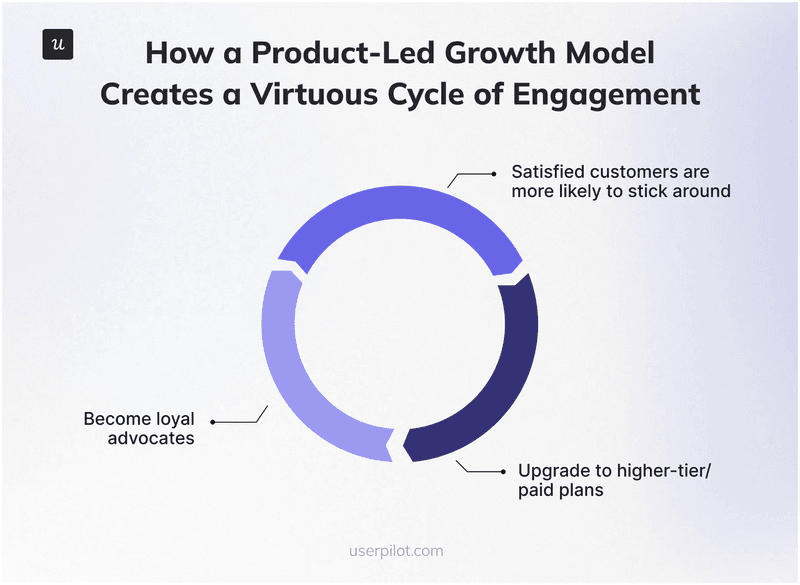
Examples of successful product-led companies in 2025 and beyond
Here are some inspiring examples of SaaS companies that are driving acquisition, retention, and customer success with the PLG model.
1. Calendly
Calendly markets itself as a “free online appointment scheduling software” and walks the talk by offering a freemium pricing model.
But Calendly’s product-led growth strategy goes beyond providing a generous free plan. Its inherent virality is a key growth lever: every time a user shares a Calendly link to invite someone to a meeting, they introduce the platform to potential new customers.
Even without signing up, potential customers can experience how Calendly frees them from endless email chains and time-consuming coordination. Since the product is free, the prospect will want to try it for their next meeting. This creates a powerful growth loop that continuously attracts and activates new users.
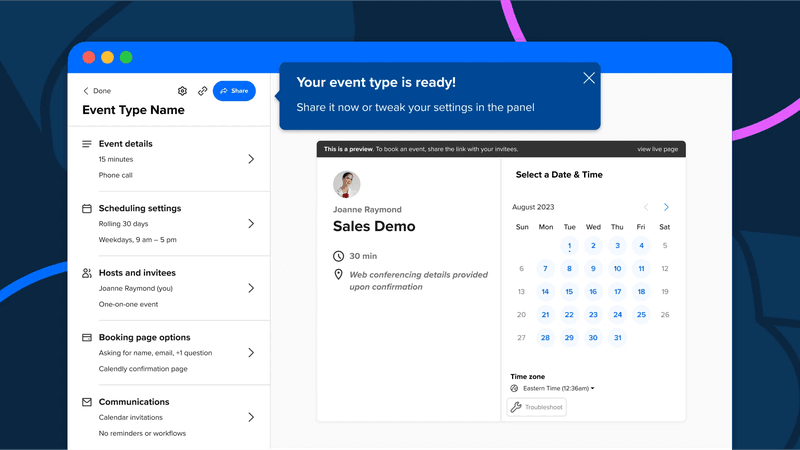
2. Dock
Dock equips businesses to build digital sales rooms, customer portals, and onboarding hubs without writing code.
A key part of its product-led strategy is creating content marketing materials that directly address the needs of its core audience groups. From the Revenue Lab blog to its Grow and Tell show, the company regularly shares insightful tips to help sales and customer success teams thrive.
This content draws potential users to at least explore its website. With just a few minutes of scrolling and clicking around, visitors can see that the platform:
- Has a modern and user-friendly design.
- Includes features to help sales teams track deals and onboard clients.
- Simplifies content management and sales analytics.
Once prospects are convinced to try the tool, Dock leverages interactive onboarding and customer support to shorten TTV and boost activation.
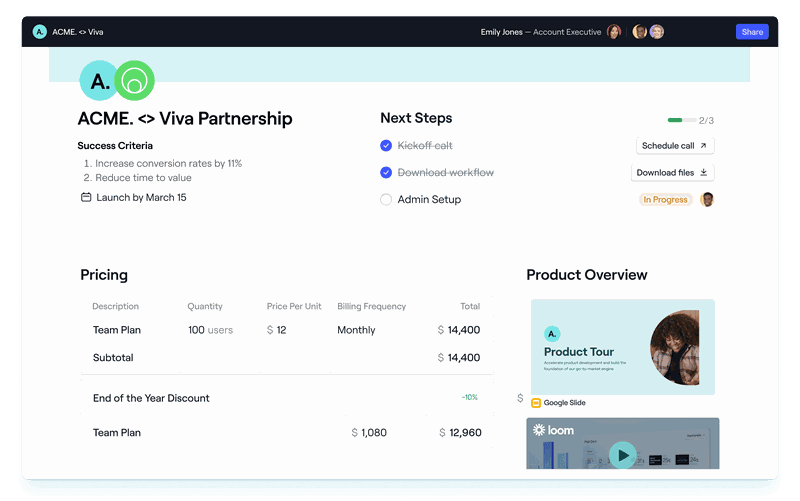
3. Slack
It’s almost impossible to discuss product-led growth marketing examples without mentioning Slack. The work management tool has created a strong brand and frequently encourages community engagement through user groups, online forums, and events (all of which contribute to its product-led growth).
Slack deeply understands its target audience and the solutions it offers. Through features like organized channels, searchable archives, and a vast app ecosystem, the software effectively replaces traditional emails for team communication and knowledge sharing.
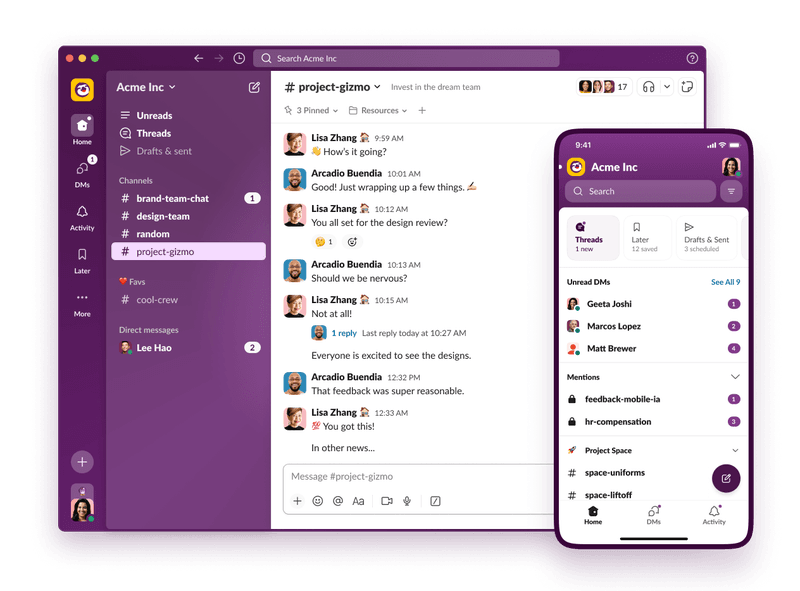
4. Miro
Miro is a digital workspace that helps teams brainstorm, collaborate, and manage projects more effectively.
Recognizing its users’ diverse needs, the company provides a wealth of resources to ensure all customer segments get the most out of the platform. From pre-built templates for various use cases to seamless integrations with popular tools, Miro empowers teams to achieve their goals faster.
Miro’s PLG strategy extends to its content marketing efforts. Through insightful blog posts and webinars, Miro highlights the benefits of visual thinking and invites visitors to explore the platform.
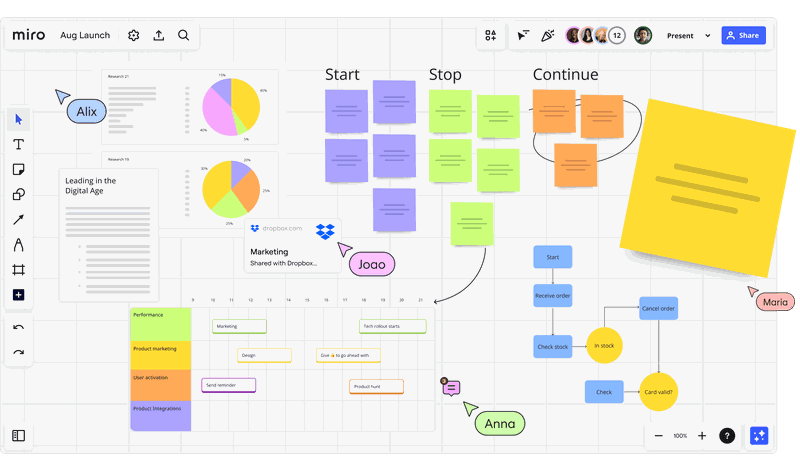
5. Basecamp
Unlike sales-led companies that often obscure pricing, Basecamp makes it easy for potential customers to understand their options and choose the plan that best suits their needs.
The project management software offers a basic free plan and a $15-per-user Plus plan, catering to solopreneurs and small teams.
Where it gets interesting is its Pro plan, which offers a flat pricing model with unlimited users. This tier addresses the pain points of large organizations by providing cost savings and advanced functionalities. It also comes with a “75-day extended free trial” that allows businesses ample time to experiment and experience the platform’s full potential.
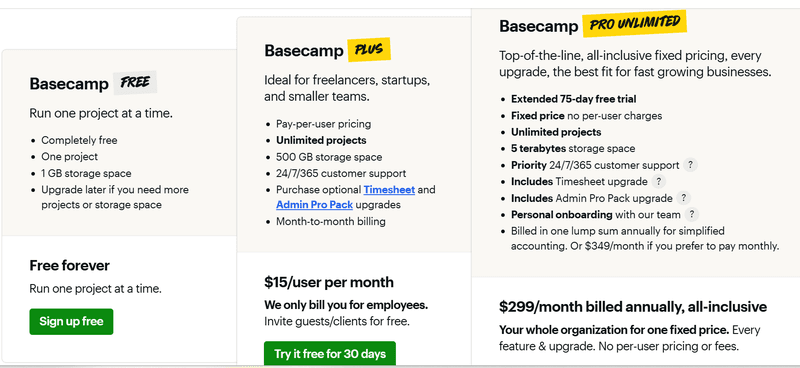
6. Notion
Remember what we said about product-led marketing helping you reduce CAC? Notion is a prime example of this.
The digital workspace built a vibrant community by motivating users to create and share templates and content. When this user-generated content is shared on social media, it acts as powerful, authentic advertising that attracts potential customers who are then drawn into Notion’s freemium model.
A recent example is the “Notion Faces” campaign, which encourages users to create personalized avatars using Notion’s design elements:
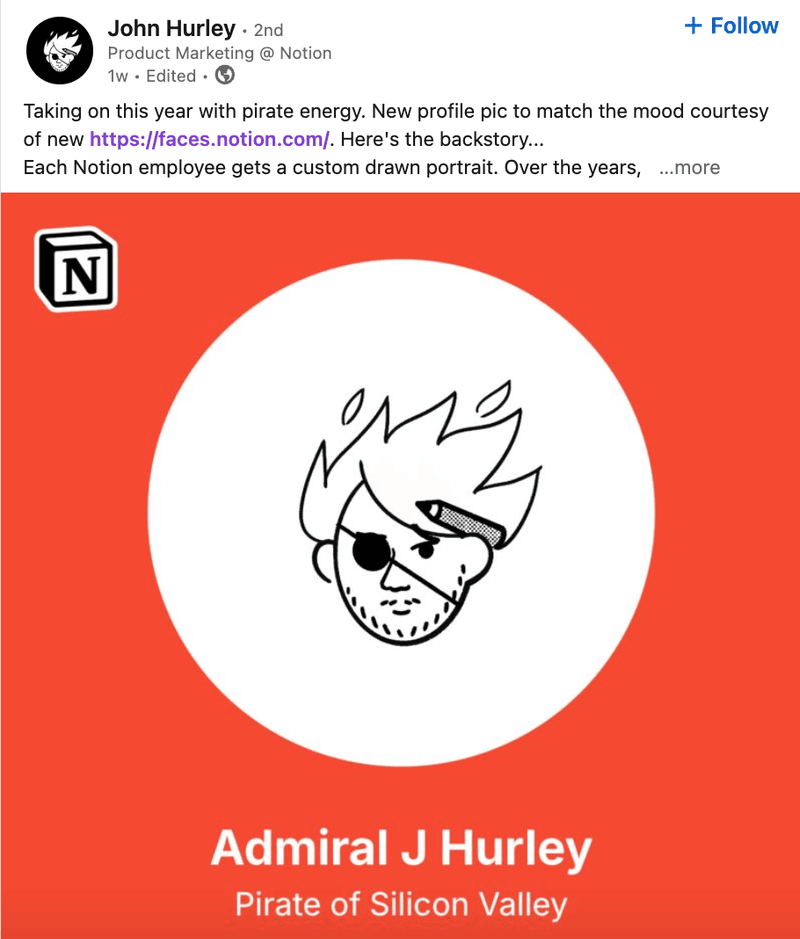
Notion has also enjoyed success and recognition from investing in bold Out of Home (OOH) campaigns. For example, its 2021 “For your life’s work” campaign won in The Drum Awards’ international category.
7. Userpilot
Userpilot is a digital adoption platform (DAP) that helps SaaS teams address the challenges of low user activation rates, poor product adoption, and lack of user engagement.
As a PLG-focused company, Userpilot practices what it preaches. Through extensive content marketing and educational resources, we help our audience understand the underlying principles of product-led growth and see how the platform can help them succeed.
In addition to valuable content, Userpilot fosters a strong community through webinars and online events. For example, here’s a recent webinar announcement on LinkedIn:
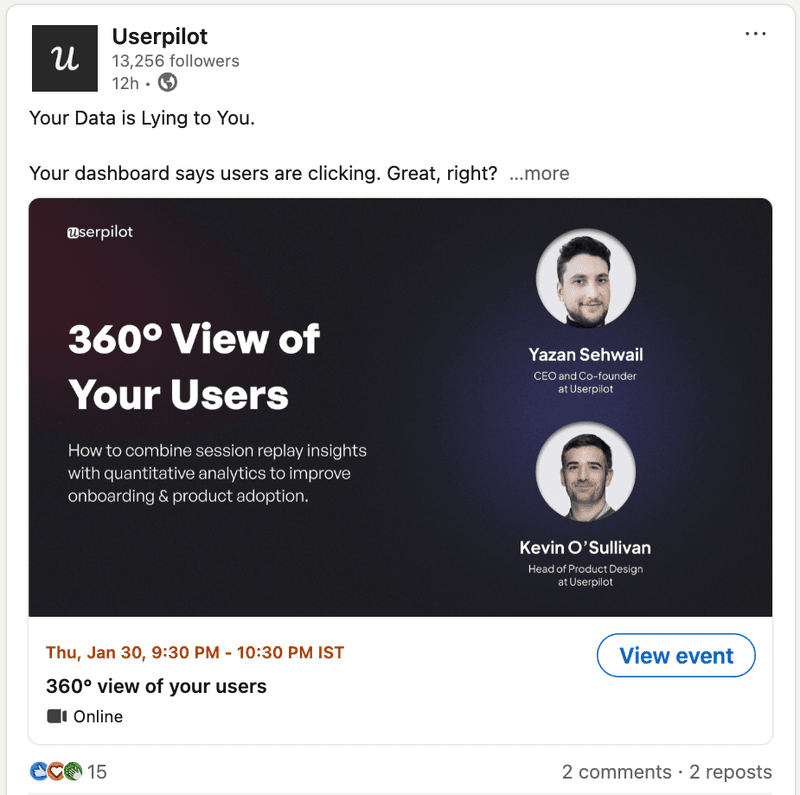
6 Effective product-led growth marketing strategies
Here are six effective strategies to get you started.
1. Create an unforgettable onboarding experience
Your onboarding flow is often a new customer’s first real interaction with your product. This initial experience plays a crucial role in shaping their perception and determining long-term retention.
How do you create a lasting positive impression? The key is to tailor the onboarding process to the user’s job-to-be-done.
Start by triggering a welcome survey to quickly learn about their core goals and identify their use case. Then, use a tool like Userpilot to create interactive walkthroughs that highlight key features and guide users towards their “aha!” moments.
Keep the onboarding flow simple, informative, and focused on helping users experience Aha! Moments as quickly as possible.
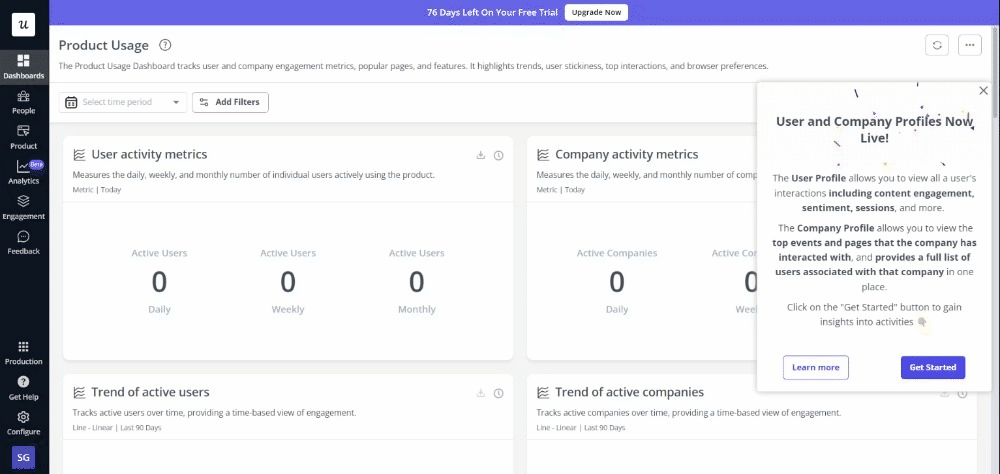
2. Optimize your self-serve model with a robust resource center
What happens when users get stuck? Most of them will try to figure things out on their own. A few will contact support. But most will just drop off…
However, a comprehensive knowledge base provides the best of both worlds and empowers users to overcome challenges independently. This not only reduces support tickets but also creates a sense of self-sufficiency and contributes to increased user satisfaction.
5 Tips to make your resource center truly impactful:
- Create multiple content formats, such as tutorial videos, help docs, and FAQs, to accommodate different preferences.
- Group resources based on customer journey stages, making it easy for users to find what they need at each step.
- Include a search bar so users can instantly locate relevant information without wasting time scrolling.
- Add a link to contact support for users who require personalized assistance.
- Save engineering resources by using a fully customizable, no-code tool like Userpilot.
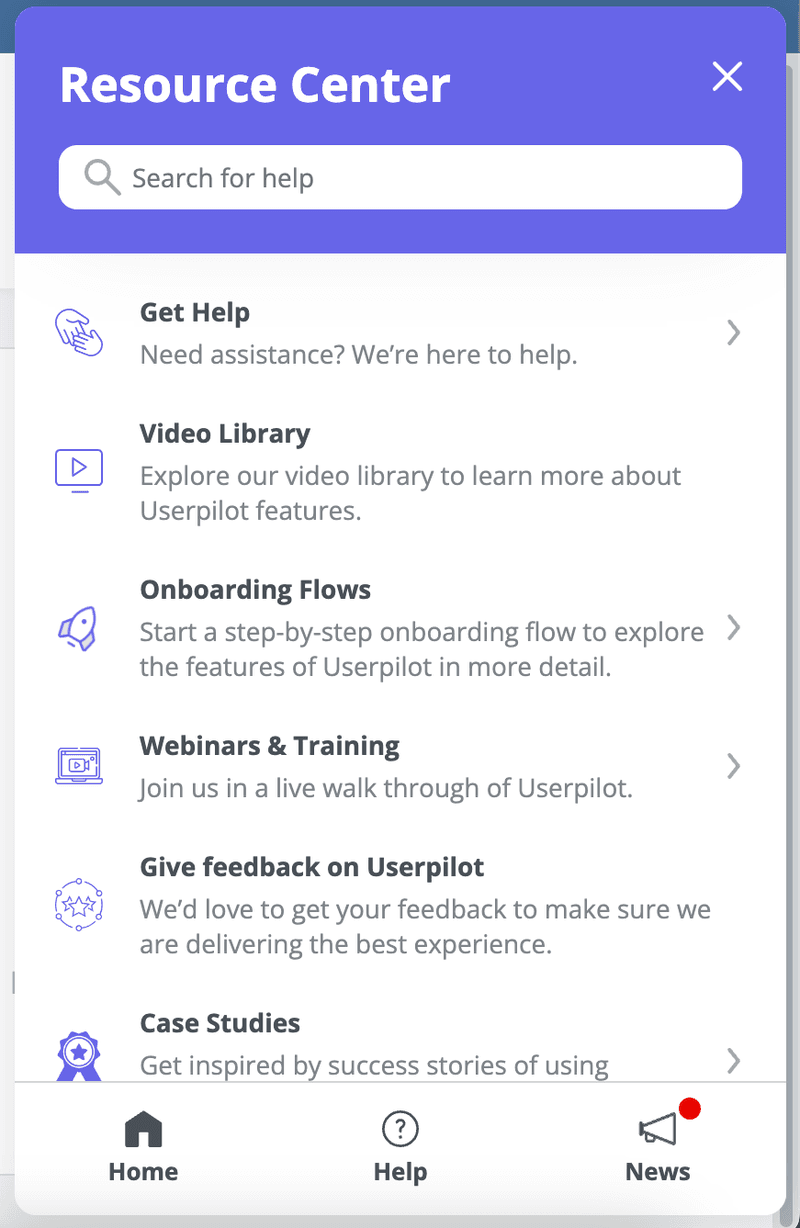
3. Use user-generated content and social proof to your advantage
Nelson’s 2021 Global Advertising study found that 88% of consumers trust recommendations from people they know more than any marketing message. This points to one thing: companies that can effectively combine UGC with their existing growth engine will experience faster growth.
Begin by identifying your power users. Then, send them in-app prompts or emails that ask them to leave feedback on rating sites.
Beyond reviews and testimonials, encourage users to create and share content related to your product on social media. For example, Canva regularly features user-created designs on its Instagram page to showcase its versatility and inspire others to create their own.
Think your product doesn’t have built-in virality? While you try to figure that out, you can interview successful users and share details of how your tool helped them. These customer success stories can easily be repurposed as social media and blog content.
For example, here’s a UGC about how Groupize used Userpilot to gamify its new onboarding flow:
4. Gamify your product experience to make it fun
SaaS products don’t have to be boring! Gamify your product by using badges or virtual rewards to celebrate user milestones. For example, this can be as simple as displaying fun animations when a user completes key onboarding tasks.
Speaking of onboarding, you can also use checklists to gamify your entire onboarding process and motivate users to finish the steps.
Userpilot lets you do this code-free:
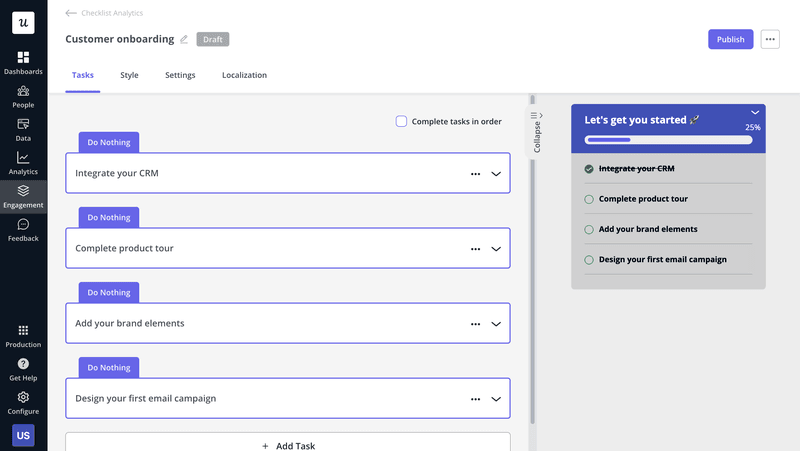
5. Hack the habit loop to make your users “stick”
Stickiness is when users return to use your product as often as possible. It often stems from two things: delivering clear value with each use, and creating an experience that’s so engaging users can’t help but return.
You can encourage stickiness by designing your product for repeat usage through features like daily challenges and usage streaks. However, don’t just implement these randomly; understand your users and know what motivates them.
For example, daily streaks might not work well for a tool designed for occasional use, like a contract management platform, but they can be incredibly effective in SaaS products that thrive on frequent interaction, such as a product management tool.
Complete the habit loop by offering instant gratification for completing actions. A good example is this custom celebration message made using Userpilot:
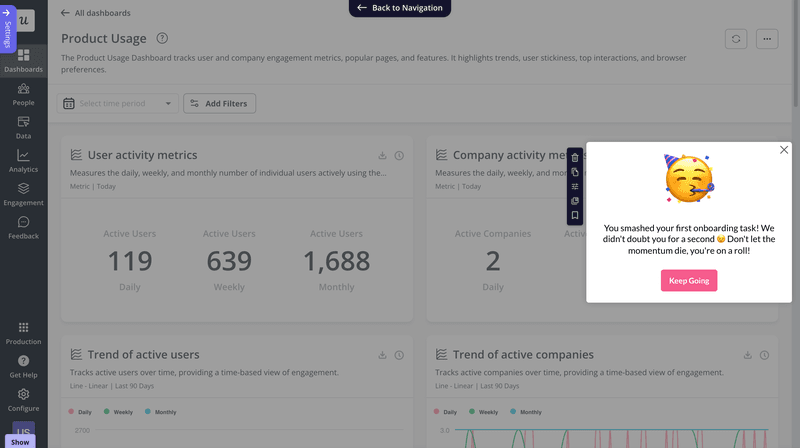
6. Turn your product into a platform to empower users to build and share
Create a marketplace or community hub to encourage information sharing and easy discovery of user-generated content.
Done well, this can become a self-sustaining ecosystem that engages your current customers, attracts new users, and boosts retention.
A great example is WordPress’s community forums. These forums provide a space for users to connect, ask questions, share solutions, and contribute to the platform’s growth.
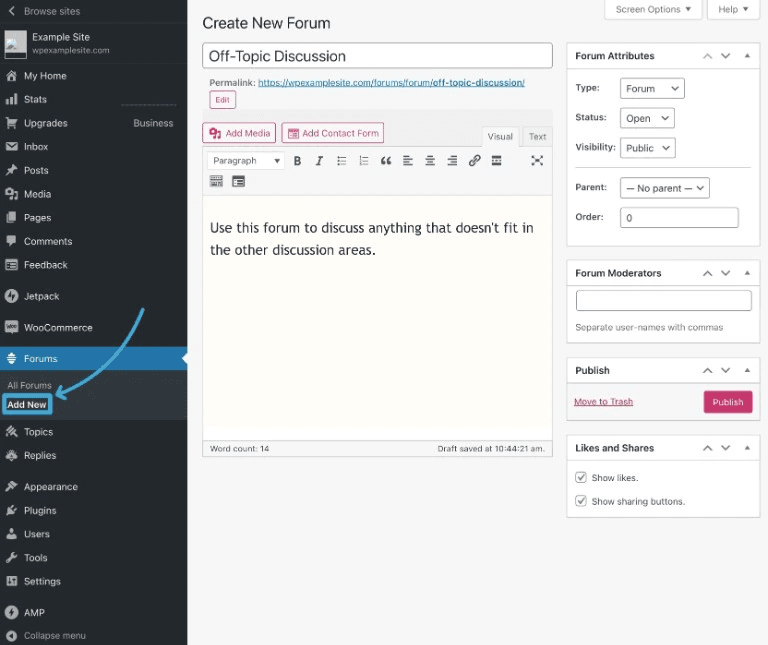
8 Key product-led growth metrics you need to track
Launching your product-led growth strategies is just the beginning. To truly unlock their potential, your product team needs to track key metrics and continuously optimize your approach. Here are eight essential metrics to guide your journey
- Product-qualified leads (PQLs): Product-qualified leads are users who have demonstrated a high level of engagement with your product and are more likely to convert into paying customers. Tracking PQLs helps you prioritize high-potential leads.
- Customer acquisition cost (CAC): The average amount of money your business spends to acquire a new customer. Use this metric to evaluate marketing and sales efficiency and optimize spending for maximum ROI.
- Customer activation rate: The percentage of customers who take a desired action(s) within a specific period of time after signing up for your product or service. A high activation rate indicates successful onboarding and early user engagement.
- Time to value (TTV): The time users take to realize the expected product value and reach their Aha! Moment. Minimizing TTV is crucial for demonstrating value quickly and increasing the likelihood of users sticking around.
- Customer lifetime value: The total expected earnings per paying customer over the length of their relationship with your business. Understanding CLTV helps you make informed decisions about customer acquisition, retention, and pricing strategies.
- Free-to-paid conversion rate: The percentage of customers who upgrade from a freemium or free trial account to a premium account. Regularly track this metric and optimize for better conversions.
- Customer satisfaction score (CSAT): This measures customer satisfaction with your product and overall experience. Higher CSATs often mean more likelihood of customer retention.
- Net revenue churn: This measures the percentage of recurring revenue lost due to churn. High churn rates mean you’re either attracting the wrong audience or your customers aren’t getting enough value.
From product to profit with PLG
While product-led growth might not be the perfect fit for every organization, its potential to drive sustainable success is undeniable.
The journey begins with a deep understanding of your target market, existing customers, and the value gaps you can fill. Armed with this insight, you can deploy the strategies we’ve explored and make data-driven adjustments with time.
Ready to kickstart or improve your product-led growth marketing strategy? Book a demo call with our team and get started!
FAQ
Is PLG or SLG better for driving growth?
PLG and SLG have their strengths, but a hybrid approach that combines the best of both worlds often yields the most effective and sustainable growth. This allows you to cater to different customer segments, leverage various acquisition channels, and maximize your overall market reach.
How can I measure the success of my product-led growth strategy?
Track key metrics such as:
- Product-qualified leads (PQLs).
- Time to value (TTV).
- Activation rate.
- Feature adoption rate.
- Expansion revenue.
- Customer satisfaction (CSAT) scores.
What are some tools that can help me implement a product-led growth strategy?
Implementing a successful PLG strategy often involves leveraging various tools to optimize different aspects of the user journey. For instance, a product adoption platform like Userpilot can help you create interactive walkthroughs, personalized onboarding flows, and in-app guidance to enhance user engagement.
Other valuable tools include analytics platforms (e.g., Mixpanel, Amplitude) for tracking key metrics, customer feedback tools (e.g., SurveyMonkey, Intercom) for gathering insights, and marketing automation platforms (e.g., HubSpot, Marketo) for nurturing leads.

